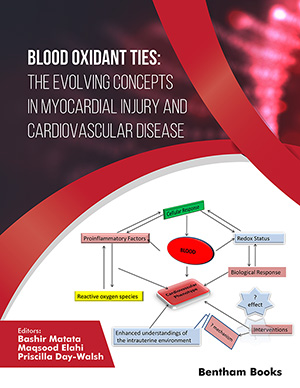Abstract
Background: Glioblastoma multiforme (GBM) is characterized by massive tumorinduced angiogenesis aiding tumorigenesis. Vascular endothelial growth factor A (VEGF-A) via VEGF receptor 2 (VEGFR-2) constitutes majorly to drive this process. Putting a halt to tumordriven angiogenesis is a major clinical challenge, and the blood-brain barrier (BBB) is the prime bottleneck in GBM treatment. Several phytochemicals show promising antiangiogenic activity across different models, but their ability to cross BBB remains unexplored.
Methods: We screened over 99 phytochemicals having anti-angiogenic properties reported in the literature and evaluated them for their BBB permeability, molecular interaction with VEGFR-2 domains, ECD2-3 (extracellular domains 2-3) and TKD (tyrosine kinase domain) at VEGF-A and ATP binding site, cell membrane permeability, and hepatotoxicity using in silico tools. Furthermore, the anti-angiogenic activity of predicted lead Trans-Chalcone (TC) was evaluated in the chick chorioallantoic membrane.
Results: Out of 99 phytochemicals, 35 showed an efficient ability to cross BBB with a probability score of > 0.8. Docking studies revealed 30 phytochemicals crossing benchmark binding affinity < -6.4 kcal/mol of TKD with the native ligand ATP alone. Out of 30 phytochemicals, 12 showed moderate to low hepatotoxicity, and 5 showed a violation of Lipinski’s rule of five. Our in silico analysis predicted TC as a BBB permeable anti-angiogenic compound for use in GBM therapy. TC reduced vascularization in the CAM model, which was associated with the downregulation of VEGFR-2 transcript expression.
Conclusion: The present study showed TC to possess anti-angiogenic potential via the inhibition of VEGFR-2. In addition, the study predicted TC to cross BBB as well as a safe alternative for GBM therapy, which needs further investigation.
Keywords: Glioblastoma multiforme, tumor-induced-angiogenesis, VEGF, blood-brain barrier, anti-angiogenesis, brain parenchyma.
[http://dx.doi.org/10.15586/codon.glioblastoma.2017.ch8]
[http://dx.doi.org/10.1136/esmoopen-2016-000144] [PMID: 28912963]
[http://dx.doi.org/10.1007/s12035-020-01892-8] [PMID: 32152825]
[http://dx.doi.org/10.1155/2013/417413] [PMID: 23533349]
[http://dx.doi.org/10.4167/jbv.2016.46.1.1]
[http://dx.doi.org/10.3389/fcell.2020.599281] [PMID: 33304904]
[http://dx.doi.org/10.1016/j.cellsig.2008.03.002] [PMID: 18440775]
[http://dx.doi.org/10.1074/jbc.M312729200] [PMID: 15026417]
[http://dx.doi.org/10.1038/sj.onc.1207034] [PMID: 14724572]
[http://dx.doi.org/10.1042/bj3600255] [PMID: 11696015]
[http://dx.doi.org/10.5772/66764]
[http://dx.doi.org/10.1371/journal.pone.0058262] [PMID: 23484006]
[http://dx.doi.org/10.14791/btrt.2017.5.1.1] [PMID: 28516072]
[http://dx.doi.org/10.1093/neuonc/noy103] [PMID: 29939339]
[http://dx.doi.org/10.3390/antiox10101606] [PMID: 34679741]
[http://dx.doi.org/10.3389/fphar.2019.01614] [PMID: 32116665]
[http://dx.doi.org/10.1016/j.drup.2015.02.002] [PMID: 25791797]
[http://dx.doi.org/10.1186/s13052-018-0563-0] [PMID: 30442184]
[http://dx.doi.org/10.1016/j.compbiomed.2021.104851] [PMID: 34520990]
[http://dx.doi.org/10.1021/ci300367a] [PMID: 23092397]
[http://dx.doi.org/10.1093/nar/gkab255] [PMID: 33893803]
[http://dx.doi.org/10.1021/acs.jmedchem.5b00104] [PMID: 25860834]
[http://dx.doi.org/10.1038/srep42717] [PMID: 28256516]
[http://dx.doi.org/10.1093/nar/28.1.235] [PMID: 10592235]
[http://dx.doi.org/10.1093/nar/gky427] [PMID: 29788355]
[http://dx.doi.org/10.1093/nar/gks493]
[http://dx.doi.org/10.1182/blood-2011-11-390922] [PMID: 22207738]
[http://dx.doi.org/10.1186/1758-2946-3-33] [PMID: 21982300]
[http://dx.doi.org/10.1016/S0169-409X(00)00129-0] [PMID: 11259830]
[http://dx.doi.org/10.1038/nprot.2006.13] [PMID: 17406216]
[PMID: 25650550]
[http://dx.doi.org/10.1538/expanim.14-0059] [PMID: 25736707]
[http://dx.doi.org/10.3390/ani9100754] [PMID: 31575048]
[http://dx.doi.org/10.2217/nnm-2018-0143] [PMID: 30265222]
[http://dx.doi.org/10.1038/srep34377] [PMID: 27678330]
[http://dx.doi.org/10.3389/fphar.2021.669370] [PMID: 34079463]
[http://dx.doi.org/10.1080/21690707.2015.1095697] [PMID: 28232893]
[http://dx.doi.org/10.1038/376066a0] [PMID: 7596436]
[http://dx.doi.org/10.1073/pnas.95.16.9349] [PMID: 9689083]
[http://dx.doi.org/10.1073/pnas.94.14.7192] [PMID: 9207067]
[http://dx.doi.org/10.1016/j.phrs.2017.03.010] [PMID: 28330784]
[http://dx.doi.org/10.1073/pnas.0914318107] [PMID: 20145116]
[http://dx.doi.org/10.3390/biom10121673] [PMID: 33333800]
[http://dx.doi.org/10.3892/ol.2020.11679] [PMID: 32724364]
[http://dx.doi.org/10.14309/crj.0000000000000011] [PMID: 31616716]
[http://dx.doi.org/10.1007/BF02975140] [PMID: 15742813]
[http://dx.doi.org/10.1021/ci100104j] [PMID: 20578727]
[http://dx.doi.org/10.1016/j.jmgm.2018.02.013] [PMID: 29609141]
[http://dx.doi.org/10.1016/j.phyplu.2021.100135] [PMID: 35403085]
[http://dx.doi.org/10.1016/j.bmcl.2020.127633] [PMID: 33132198]
[http://dx.doi.org/10.1093/nar/gkg520] [PMID: 12824332]
[http://dx.doi.org/10.1016/S0076-6879(97)77022-8] [PMID: 9379925]
[http://dx.doi.org/10.1016/j.compbiomed.2013.09.021] [PMID: 24290922]
[http://dx.doi.org/10.1186/s43141-022-00340-5] [PMID: 35394551]
[http://dx.doi.org/10.2147/OTT.S84200] [PMID: 26257525]
[PMID: 19499576]
[http://dx.doi.org/10.1186/s13020-021-00423-4] [PMID: 33478536]
[http://dx.doi.org/10.1080/10799893.2020.1715431] [PMID: 31971455]
[http://dx.doi.org/10.1080/13880209.2018.1548627] [PMID: 31070539]
[http://dx.doi.org/10.1016/j.phymed.2016.12.013] [PMID: 28190470]
[http://dx.doi.org/10.1371/journal.pone.0189628] [PMID: 29232409]
[http://dx.doi.org/10.1016/j.mvr.2016.12.011] [PMID: 28040437]
[http://dx.doi.org/10.1515/jbcpp-2019-0327] [PMID: 31855569]
[http://dx.doi.org/10.1007/s40203-020-00057-8] [PMID: 33194532]
[PMID: 34903987]
[http://dx.doi.org/10.3390/molecules26195904] [PMID: 34641448]
[http://dx.doi.org/10.3390/ijms23010452] [PMID: 35008876]
[http://dx.doi.org/10.1038/s41598-020-58650-y] [PMID: 32029768]
[http://dx.doi.org/10.1007/978-1-4939-3999-2_12] [PMID: 27858362]
[http://dx.doi.org/10.1016/j.exer.2011.02.007] [PMID: 21354136]
[http://dx.doi.org/10.1016/j.mod.2016.05.003] [PMID: 27178379]
[http://dx.doi.org/10.1007/s13277-015-4473-0] [PMID: 26611645]
[http://dx.doi.org/10.1016/j.vph.2018.04.005] [PMID: 29678603]
[http://dx.doi.org/10.2174/1568009054064624] [PMID: 15975046]
[http://dx.doi.org/10.3390/life12091444] [PMID: 36143480]
[http://dx.doi.org/10.1093/carcin/bgp039] [PMID: 19228635]
[http://dx.doi.org/10.1016/j.ejmech.2019.06.054] [PMID: 31252306]
[http://dx.doi.org/10.1111/jfbc.13476] [PMID: 32944984]
[http://dx.doi.org/10.1016/j.biopha.2016.11.047] [PMID: 27903423]
[http://dx.doi.org/10.1007/s43188-021-00089-y] [PMID: 34631505]
[http://dx.doi.org/10.3389/fphar.2018.01123] [PMID: 30333752]
[http://dx.doi.org/10.1139/cjpp-2016-0071] [PMID: 27191034]
[PMID: 29796217]
[http://dx.doi.org/10.1039/c6pp00442c] [PMID: 28594010]
[http://dx.doi.org/10.2147/vhrm.2006.2.3.213] [PMID: 17326328]
[http://dx.doi.org/10.1177/1947601911432334] [PMID: 22866200]
[http://dx.doi.org/10.1248/bpb.29.1028] [PMID: 16651739]
[http://dx.doi.org/10.3389/fchem.2021.766201] [PMID: 34900935]






























